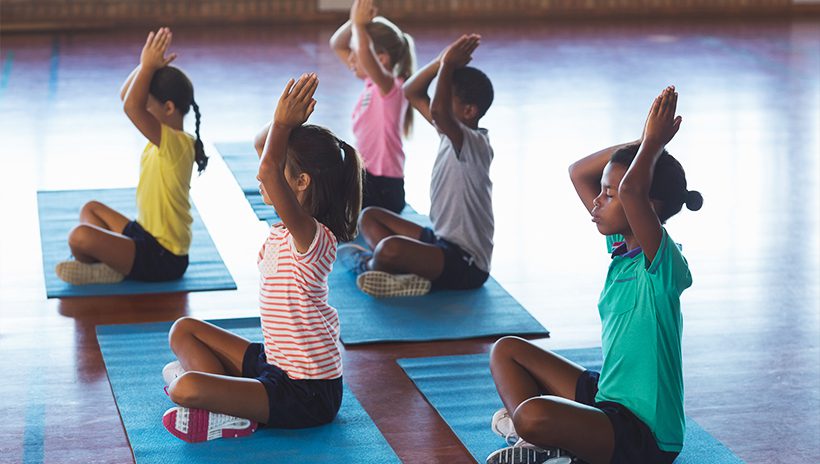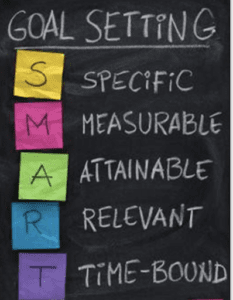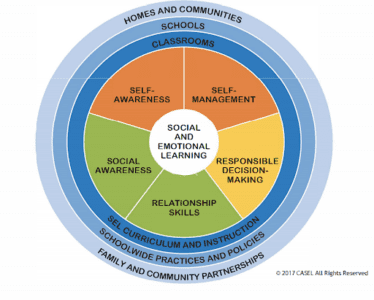SEL & Beyond: Self-Management

Welcome to the third blog post of our six-part blog/webinar series on Social and Emotional Learning (SEL) for grades K–12.
One of the most trusted sources for knowledge about high-quality, evidence-based social and emotional learning is The Collaborative for Academic, Social, and Emotional Learning (CASEL). This post will focus on CASEL’s SEL competency Self-Management and will include real-life examples and engaging strategies to be used in the classroom and online.
| Competency | Skills We Need Now |
| SELF-MANAGEMENT: The ability to successfully regulate one’s emotions, thoughts, and behaviors in different situations—effectively managing stress, controlling impulses, and motivating oneself; and the ability to set and work toward goals. | Self-management is critical now as we cope with grief and loss, develop our resiliency, and express our agency through resisting injustices and practicing anti-racism. |
* CASEL, 2020
Regulating Emotions
In blog post #2 on Self-Awareness, we shared the benefits of, and strategies for, naming emotions. Here we’ll continue the conversation, discussing how to manage emotions once we’ve identified them.
Let’s Talk About Stress, Baby

A myriad of emotions are linked to stress. What do we know about stress? Once upon a time, stress helped human beings to not get eaten by a woolly mammoth. However, chronic and high levels of stress can be downright toxic to our minds and bodies. The physical and biological effects of stress (dilated pupils, increased heartbeat, etc.) render us far less receptive to learning. We also know that our students who belong to marginalized and historically underserved populations experience more stress more frequently—specifically, the toxic stress of racism, which we know contributes to adverse mental and physical health effects in people of color (Comas-Diaz & Hall, 2019; Williams, 1999). While there are many different causes of stress, we’re most successful in managing our stress when we can identify the source.
Reflection Question: How might this quote apply to your students?
We know how stressful and overwhelming teaching can be. We want you to remember that you are not in it alone and that your health and well-being are a priority. Educators and school staff are some of the most selfless people on earth, but we’re here to remind you to make sure you put on your oxygen mask first (a.k.a., learn stress management skills) before you assist others. In other words, you are too important to let your needs take a backseat.
Ways to Manage Stress
The ability to manage and cope with stress in a school setting provides immeasurable benefits for students, teachers, and the community as a whole. While there are tons of ways to manage stress, we’re going to focus on several methods to manage stress that can be done anywhere at any time.
For You (Adults)
Qigong
One of our favorite ways to start the morning and manage stress is Qigong (pronounced chee-gung). Qigong is a collection of basic tai chi-style movements and practices that improve circulation and increase energy. There are tons of videos available for free on the internet. Find one that speaks to you.
Yoga Nidra
Getting adequate rest and high-quality sleep can be difficult, especially during a pandemic. One of our favorite methods for relaxing the body and mind is Yoga Nidra. Yoga Nidra is a conscious relaxation practice that you do lying down. This practice is about 20 minutes and you can use it as a midday recharge or a pre-bedtime primer. Again, find a video that suits you.
For Everyone
Mindfulness
Mindfulness is getting a lot of attention nowadays and for good reason. Mindfulness is paying attention to the present moment without judgement. Research shows that mindfulness provides us with skills to build attention, improve focus, and manage stress—allowing us to feel nourished and energized to support and connect with students in the classroom, at home, and beyond. Anyone who’s ever practiced mindfulness can tell you that it is not always as easy as it sounds. Oftentimes, it’s our chattering brains that are responsible for taking us out of the present moment and creating “mental noise” that can cause stress. For example, when we worry, we’re focusing our thoughts on the future, and when we dwell we are focusing our minds on the past. Mindfulness helps to bring us into the present moment, which helps to mitigate the effects of stress on the mind and body. Here are some ways to introduce and engage in mindfulness in your physical or virtual classrooms:
11 Simple Ways to Teach Mindfulness to Kids
25 Fun Mindfulness Activities for Children and Teens
Meditation
While meditation and mindfulness are sometimes used interchangeably, they are not the same thing. Meditation typically refers to a formal seated practice. Like mindfulness, meditation has proven to be an effective way to manage stress and bring about a sense of well-being. Rather than being caught up in our stress, meditation teaches us to become the observers of certain mental patterns and, therefore, become less physically affected by them.
If you feel intimidated by either of these practices, we get it. Just so you know, you do not need to don a white robe and sit on a mountaintop to get started. You can wear jeans from Target and sit on your couch.
For Students

K–12 students benefit greatly from mindfulness and meditation practices. Here are a few breathing techniques:
A great technique for releasing tension associated with anger. Breathe in deeply though your nose. Hold. On the exhale, open your eyes and your mouth wide, and stick out your tongue.
Block one nostril and inhale for five seconds. Block the other nostril and exhale for five seconds. Repeat.
Abdominal Breathing (Breath of Fire)
This exercise increases the supply of oxygen to your brain and promotes a feeling of calmness. Deep breathing helps to activate the body’s relaxation response, and studies show that abdominal breathing each day reduces anxiety and stress.
Deep Breathing Exercises for Kids
25 Ways to Incorporate SEL in Elementary
Motivation
Another aspect of Self-Management is motivation. For this section we’d like to take you on a little trip back in time:
I am a first-year teacher working with a group of eighth graders to prepare them for the upcoming constitution test. I have one student, Rico, who simply won’t complete the study guide. So, I incentivize (bribe) him with his favorite candy bar. The next day, Rico turns in the completed study guide and I hand him the candy bar—a real quid pro quo. A few days later, when it’s time to take the test, Rico says he doesn’t want to sit for it. When I ask him why he replies, “If a study guide is worth one bar, the test must be worth about three bars, but I’m definitely not doing it for free.”
What happened here?
I’ll tell you. By providing an external incentive, I assigned a value, specifically one candy bar, to the task at hand. I drained all the potential for Rico to self motivate because, by trying to bribe him, I inadvertently sent the message that this work was drudgery and, therefore, the only way to slog through it was to be compensated.
We know from experience that external rewards work in the short term. Whether it’s candy, pizza, or bonus bucks, in the short term they work like a charm. Why? For the same reason people like to go to casinos. DOPAMINE! That’s right, Rico’s brain got a little burst of the feel-good chemical dopamine. But, constantly providing incentives in the form of external rewards does not work in the long term. I made the mistake of trying to coax effort out of Rico. Effort shows that you care. Rico didn’t care about the test because it had not been made relevant for him.
In hindsight, I should have validated Rico’s negotiation skills and somehow tied them into persuasive writing; alas, I did not. Something else I failed to do was to provide Rico with a rationale for what he was doing. I did not take the time to make a connection between the content and his real life. Students are more motivated when they can assign meaning to something. I denied Rico what researcher Daniel Pink calls the three ingredients of genuine motivation: autonomy, mastery, and purpose.
Autonomy is the urge to direct one’s own life.
Mastery is the desire to get better at something that matters.
Purpose is the yearning to do work in the service of something larger than one’s self.
Reflection Question: How often are students being provided with autonomy, mastery, and purpose?
Unfortunately, when students are unmotivated in school, some behavior management programs double down on threats of punishment in order to get compliance. The problem is compliance is mostly effective for routine work, but 21st-century learners need to be creative, collaborative, and innovative.
Motivation Strategies
A vision board is a fun and simple tool that helps clarify and illuminate a specific life goal. Simply put, a vision board is any sort of “board” (which could be a piece of paper) that you display images on to represent whatever you want to be, do, or have in your life. If you’re more tech savvy you can check out free online software like Canva. Either way, you’ll want to display your vision board in plain sight so you can’t help but connect with what motivates and inspires you.
15 Actionable Strategies for Increasing Student Motivation & Engagement
Goal Setting
Goal setting can be an incredibly powerful strategy that gives students the opportunity to achieve something that’s really important to them while experiencing pride in their accomplishments. The very act of creating a goal takes courage! Think about it… the last time you set a goal—was it exciting and a bit nerve-wracking? We hope so!
Part of setting ourselves up for success is setting an appropriate goal to begin with. So, let’s check out some parameters you’ll want to put in place when crafting a goal using the “SMART” method.
S- is the goal specific? (is it clear and precise?)
M- is the goal measurable? (how will I know I’ve accomplished it?)
A- is the goal attainable (is it a stretch but not impossible?)
R- is the goal relevant? (what is important to me about the goal?)
T- is it time bound (does it have a “by when” date?)
 When supporting students to develop a SMART goal, the “juice” for them is in the relevance. It’s about helping them discover what it is that’s important to them about the goal they’ve set. Oftentimes, we can accidentally project what we think should be important for our students or what we think their goals should be. Having goal setting be a student-led experience will get them most excited and engaged about the process.
When supporting students to develop a SMART goal, the “juice” for them is in the relevance. It’s about helping them discover what it is that’s important to them about the goal they’ve set. Oftentimes, we can accidentally project what we think should be important for our students or what we think their goals should be. Having goal setting be a student-led experience will get them most excited and engaged about the process.
Once a goal has been set, we can count on there being ups and downs and plot twists along the way (that’s just how life works). Here are four tips to help your students overcome these inevitable obstacles and that will absolutely make a difference in the journey to scoring a goal:
- Take small steps. If we make our steps too big, we’re not likely to do them. You’ve probably experienced this before yourself; you get excited and over-promise, which leaves you feeling like a “deer in headlights” or heading for the fridge to mindlessly snack instead of taking action. Support your students to always look at what the next small step is toward scoring their goal. If their next step is too big, have them break it down into smaller, more bite-sized pieces. This gives us the greatest chance to experience success, which leads to momentum and, you got it, more steps. For example, if a student is reluctant to do 10 dragon breaths, then ask them how many breaths they would like to try. Maybe they start with two and when experiencing success with two breaths, they gradually build up over time.
- Celebrate accomplishments along the way. Celebrating isn’t reserved only for scoring the goal. Give your students the opportunity to celebrate their successes along the way—it’s more engaging and motivating when we pause to celebrate the small wins alongside the big ones.

- Call in support. Your student will inevitably get “stuck” at some point in trying to score their goal. Encourage them to build the muscle of “calling in support.” Who might be able to help them? What resources might be available or could be put in place that would help them reach their goal? Have they shared their goal with someone else, who can help cheer them on?
- Make the goal & progress visible. Have the students display their goal somewhere they can see it, as this helps keep the goal “in front” of them (“out of sight, out of mind” can be true!) You have lots of options to keep the goal visible: you can create a goal “garden” for your entire classroom to display their goals, have students display their goal on their desk or at home, have students put their goal on the kitchen fridge, by their bed, desk, bathroom mirror, you get the idea.
We all love seeing progress! Have students track their accomplishments along the way with something simple like a “goal thermometer.”
Skills We Need Now
CASEL identifies practicing anti-racism as a self-management skill. As this school year gets underway, school districts and educators all across the country are engaging in the all important work of anti-racist professional development. An anti-racist educator actively works to dismantle the structures, policies, institutions, and systems that create barriers and perpetuate race-based inequities for people of color (Simmons, 2019).
As mentioned earlier, our students experience a substantial amount of stress related to racism. Racism yields racial inequities and disparities in every sector of private and public life. That includes in politics, health care, criminal justice, education, income, employment, and home ownership.
SEL is most meaningful when stakeholders understand the effects of systemic racism on their students of color, their families, and their communities.
We understand that many of us are entering this conversation at different stages and with varying levels of awareness. Blogs are a great start, but they don’t change the world—YOU do. The question we pose to you now is: What will you do next?
We’ve included a bunch of resources below to support you on your journey.
Want more on SEL? Check out the next chapter in this series, SEL & Beyond: Social Awareness.
Additional Resources:
CASEL
CASEL promotes evidence-based social and emotional learning strategies and programs. The website contains information about current research, materials for learning activities, webinars, and new initiatives related to equity.
ASCD: How to Be an Antiracist Educator
This piece delineates what it means to practice anti-racism and provides actionable strategies for being an anti-racism educator
Avoiding Racial Equity Detours (EdChange)
This short article describes four common ways schools and districts attempt to address equity while avoiding the discomfort of directly challenging racism and racist structures and policies, and follows with five principles to guide equity actions.
If We Aren’t Addressing Racism, We Aren’t Addressing Trauma (Simmons, via ASCD)
This blog from Dena Simmons provides critical context to push educators to “interrogate, with an anti-racist lens, the curriculum, learning experiences, and school policies to which our Black students are subject.”
Strategies for Trauma-Informed Distance Learning (WestEd)
This brief offers general strategies and specific examples for how to recognize and respond to students’ social and emotional needs as well as build in trauma-informed practices that will support all students.
A Guide to Equity and Anti-Racism for Educators
Teachers shaken by recent events and wondering how to work for change in our society and schools can start with these lesson plans, videos, and other resources.
Self-Management Pinterest Board
SEL strategies, ideas, and activities specially curated for you by the authors.
See also:
The first two chapters of this series:
The next chapters in this series:
- SEL & Beyond: Social Awareness
- SEL & Beyond: Relationship Skills
- SEL & Beyond: Responsible Decision-Making
About the Authors

Trisha DiFazio is an author, education consultant, and former adjunct professor in the Rossier School of Education at the University of Southern California (USC). She is passionate about empowering teachers and students around Social and Emotional Learning, Cultural Responsiveness, and Mindfulness.

Allison Roeser, Master of Health Science (MHS) and Professional Certified Coach (PCC), has almost two decades of experience working with leaders in education, child welfare, and social change. As an avid learner of mindfulness practices, Allison has seen firsthand the value of integrating self-awareness into professional and personal development.

